#Greek War History
Explore tagged Tumblr posts
Text
Somehow I missed this - last month the University of Thessaly tested the Mycenaean Dendra armour for combat by putting it on Greek Marines in an “11-hour simulated Bronze Age combat protocol”!
Not only did it prove battle-worthy, we now have THIS IMAGE🤯

Article: https://www.sci.news/archaeology/dendra-armor-12959.html
Study: https://journals.plos.org/plosone/article?id=10.1371/journal.pone.0301494
#ancient greece#experimental archaeology#dendra armour#dendra#dendra panoply#trojan war#iliad#greek mythology#greek myth#tagamemnon#archaeology#drawing prompt#warrior#achilles#study#ancient history
1K notes
·
View notes
Text

A scene from the Trojan War: Achilles and the Ethiopian king Memnon, son of Eos (Dawn), clash in single combat, flanked by chariots. This combat was recounted in the Aethiopis, a now-lost poem belonging to the Epic Cycle that continued the story of the Trojan War after the Iliad and Hector's death. As often, the relationship between literature and visual art is unclear: did the vase painter deliberately set out to illustrate the Aethiopis, or did poet and painter simply draw upon the same stock of traditional oral narrative?
Attic black-figure pyxis, in the manner of the C Painter; ca. 570 BCE. Now in the Staatliche Antikensammlungen, Munich, Germany.
#classics#tagamemnon#Ancient Greece#Archaic Greece#classical mythology#Greek mythology#Trojan War#art#art history#ancient art#Greek art#Ancient Greek art#Archaic Greek art#vase painting#black-figure#pyxis#C Painter#Staatliche Antikensammlungen
518 notes
·
View notes
Text
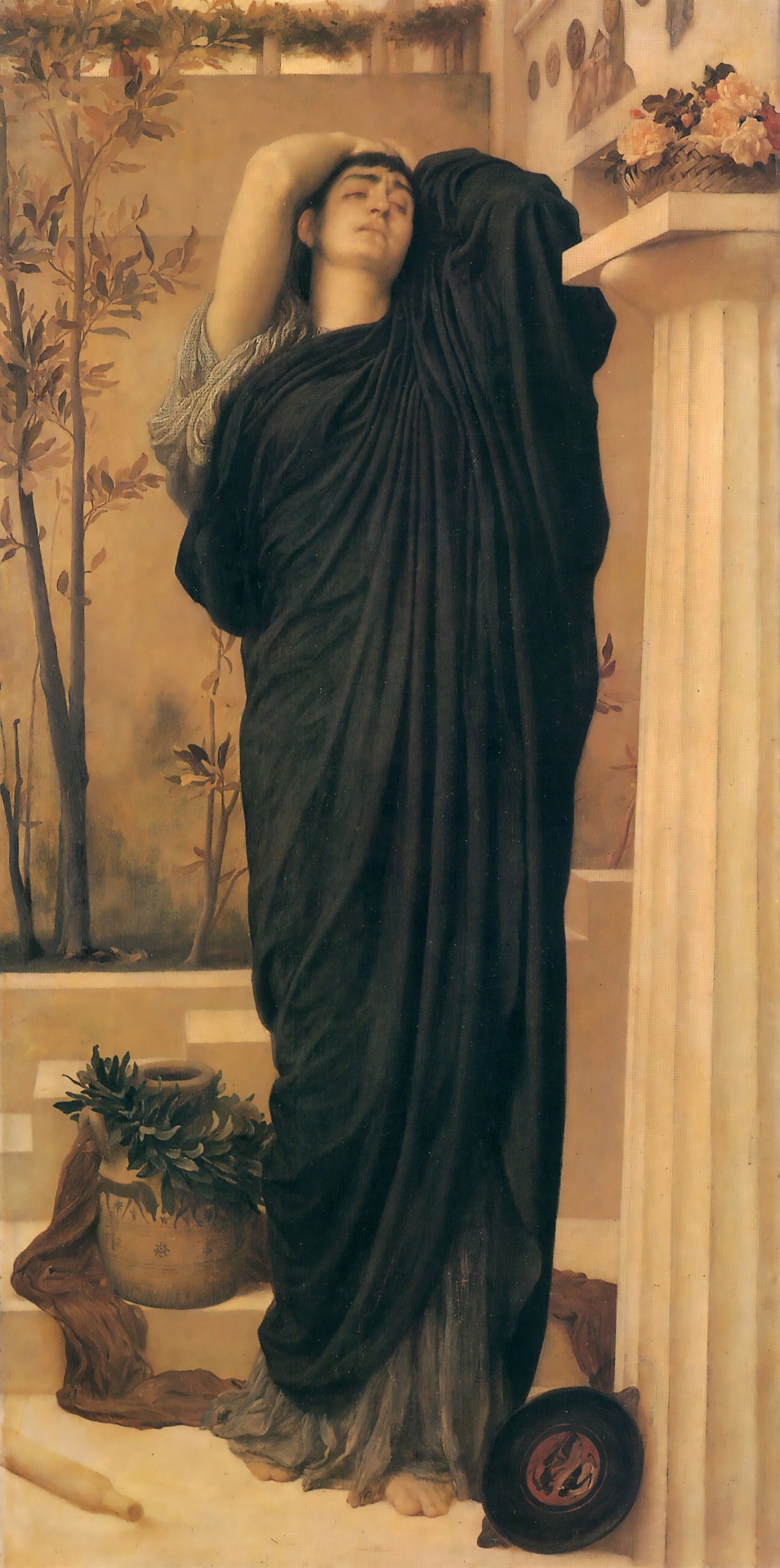
Electra At The Tomb Of Agamemnon, 1868-1869 Frederic Leighton
#Frederic Leighton#english art#art#painting#art history#1860s#mythology#greek mythology#Electra#Agamemnon#trojan war
566 notes
·
View notes
Text
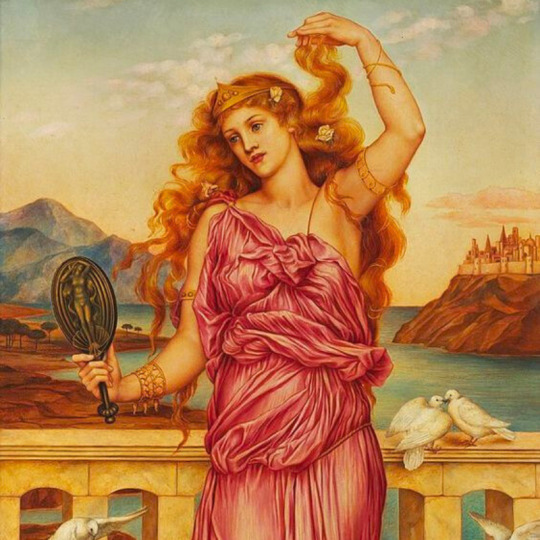
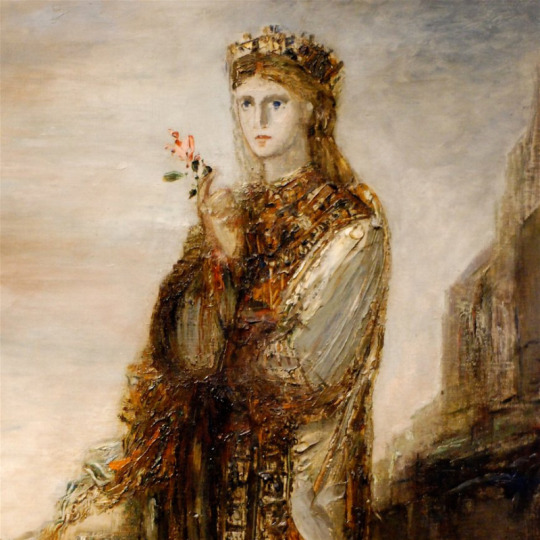


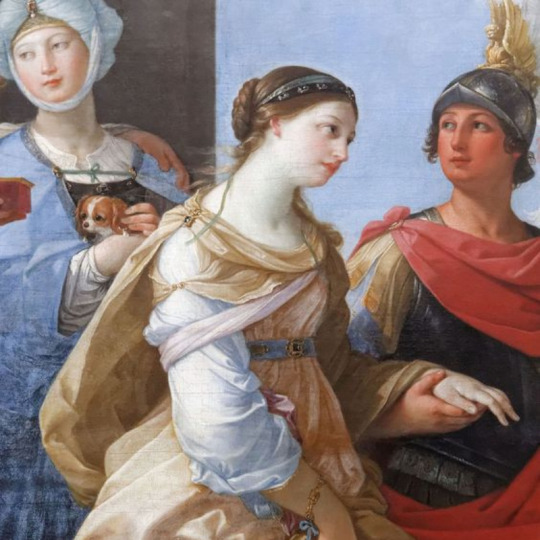
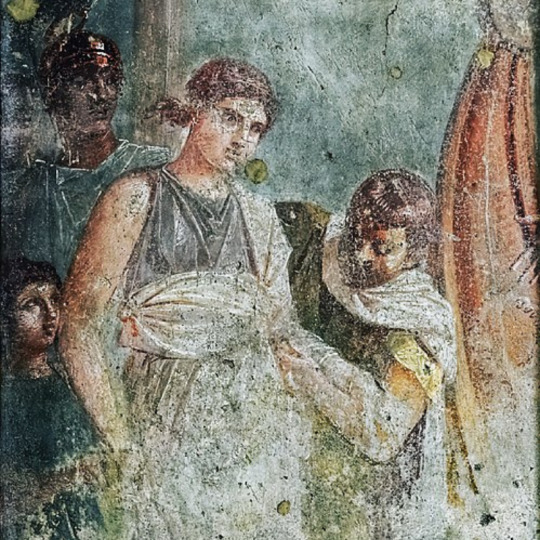

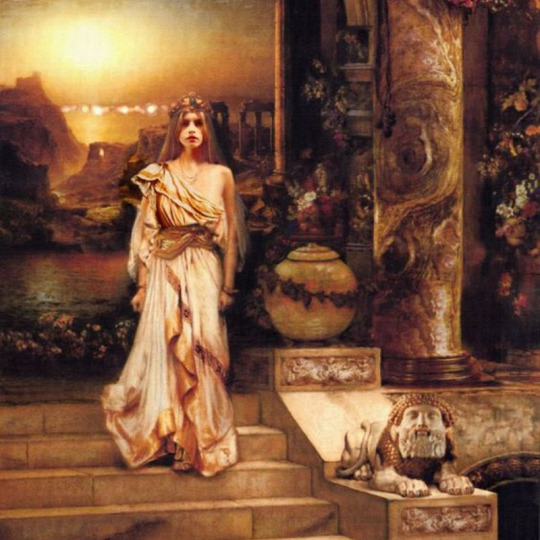
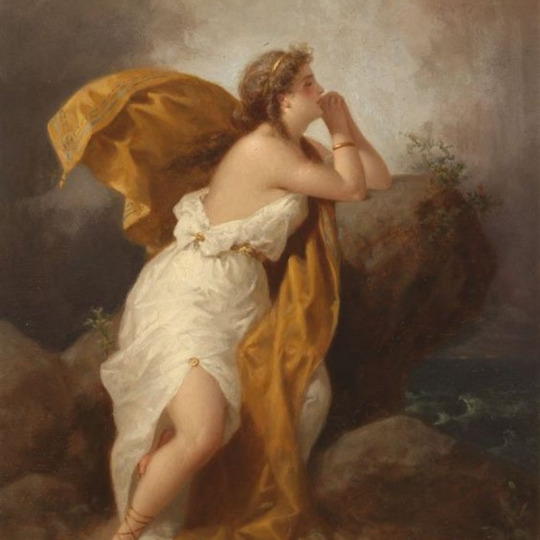

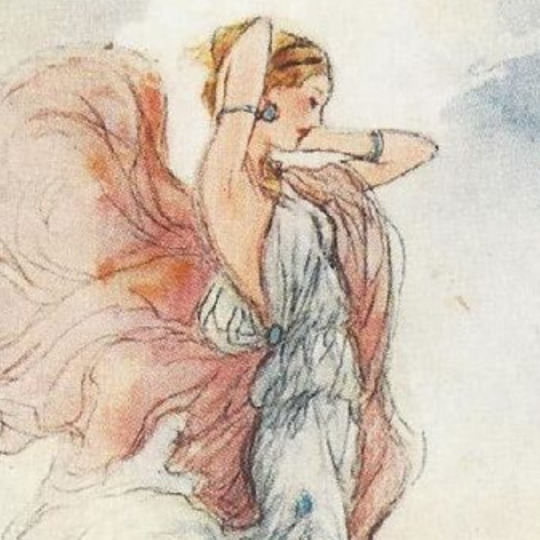
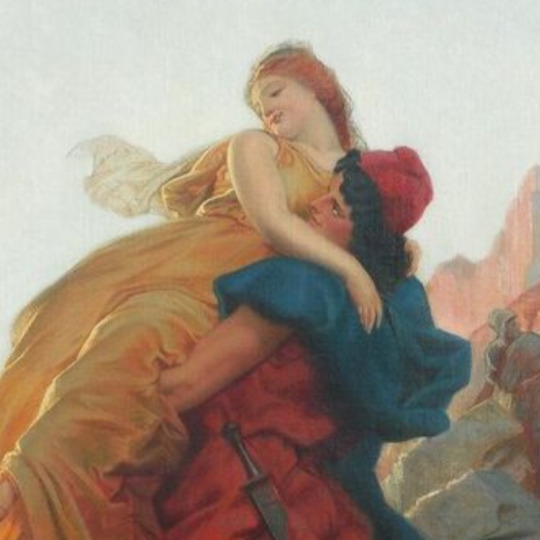
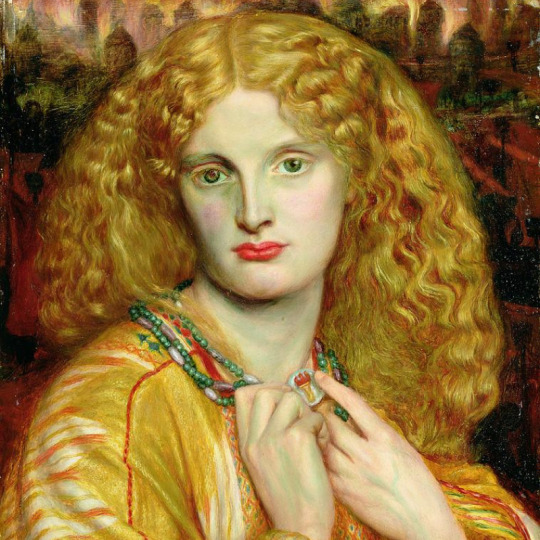
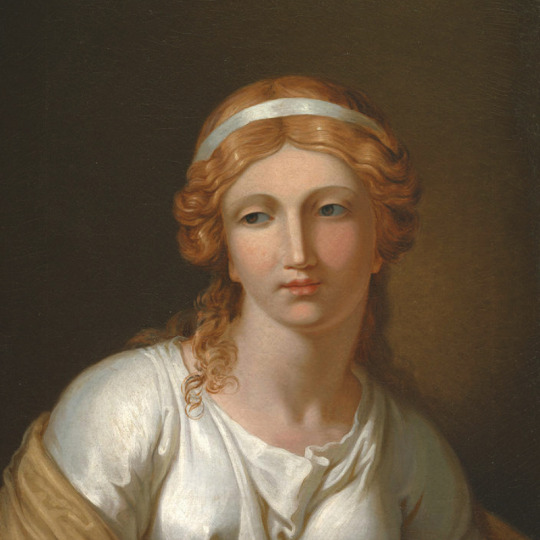
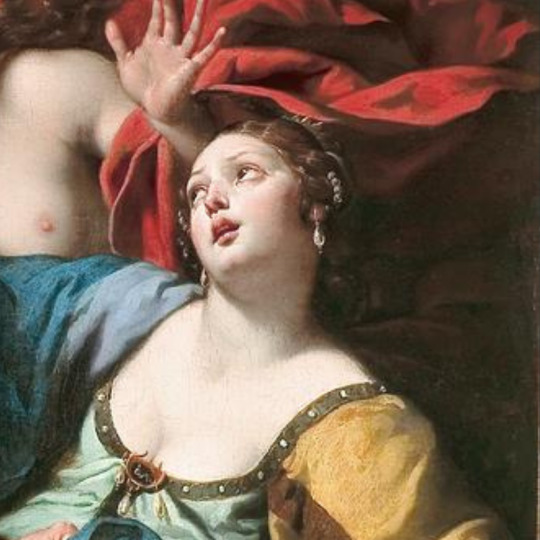
women in art: helen of troy
#artist is evelyn de morgan#artist is gustave moreau#artist is gaston bussiere#artist is frederick augustus sandys-walker#artist is guido reni#unknown artist#artist is jacques-louis david#artist is howard david johnson#artist is enrico fanfani#artist is edward john poynter#dont know the artist#artist is rudolf friedrich von deutsch#artist is dante gabriel rossetti#artist is johann heinrich wihelm tischbein#artist is luca ferrari#art history#greek mythology#helen of troy#trojan war#art#ancient greece
696 notes
·
View notes
Text

Triumphant Achilles by Franz von Matsch
#franz von matsch#art#achilles#hector#trojan war#duel#chariot#the iliad#troy#homer#ancient greece#ancient greek#history#greek mythology#helmet#europe#european#classical antiquity#horses#armour#spear#shield
149 notes
·
View notes
Text
Ares, Protector of Women

Article link at the end of post. Hi all! I recently downloaded Substack and wanted to write about a pretty messy topic that I have a lot of feelings on: Ares' unofficial title as 'protector of women' in modern cult space. While I personally use it and find there to be enough history to back it up as a UPG title, it's not super black and white when you look back into historical records and mythology.
So naturally I wrote a little article about it! I discuss myths that are usually used as sources for this title along with generally looking at how Ares interacts with gender norms and how that can influence the discussion.
I hope it's a fun read and please let me know if something went horribly catastrophically wrong on the actual posted part as I am not tech-savvy and not used to Substack. Link below!
#hellenic polythiest#hellenic polytheism#greek gods#hellenic worship#ancient greece#hellenic deities#ares deity#ares#ares protector of women#greek myth#greek mythology#ancient culture#ancient history#greek history#antiquity#ancient world#ancient cultures#feminism#feminist history#ares god of war#ares devotee
69 notes
·
View notes
Text

Ares! or..Mars in this case, anyways, can someone tell me what statue this is because I just found the random image
#ita#epic the musical#ares#ares god of war#ares deity#epic ares#greek gods#ancient greece#greece#greek mythology#greek tumblr#greek myth art#greek mythology art#my art#digital art#artwork#artists on tumblr#view#statue#statues#ancient history#dantedettodurante#ancient#artifacts
58 notes
·
View notes
Note
A question about visual arts this time
Do you have any favorite classics artwork(s) that is Iliad related? Like ancient potteries of Homeric heroes, mural arts, paintings during the medieval Europe, etc?
Oh my that is a very good question! There are so many pottery painting and murals of later years that portray so greatly the epic cycle that is so hard to choose!!! But I believe one of the old masters is definitely Exekias! As you remember from my small analysis on the preparation of Ajax suicide. He creates some amazing pasterpieces with the Iliad protagonists and he is very detailed in his style. See for example the famous depiction of Ajax and Achilles playing a board game:
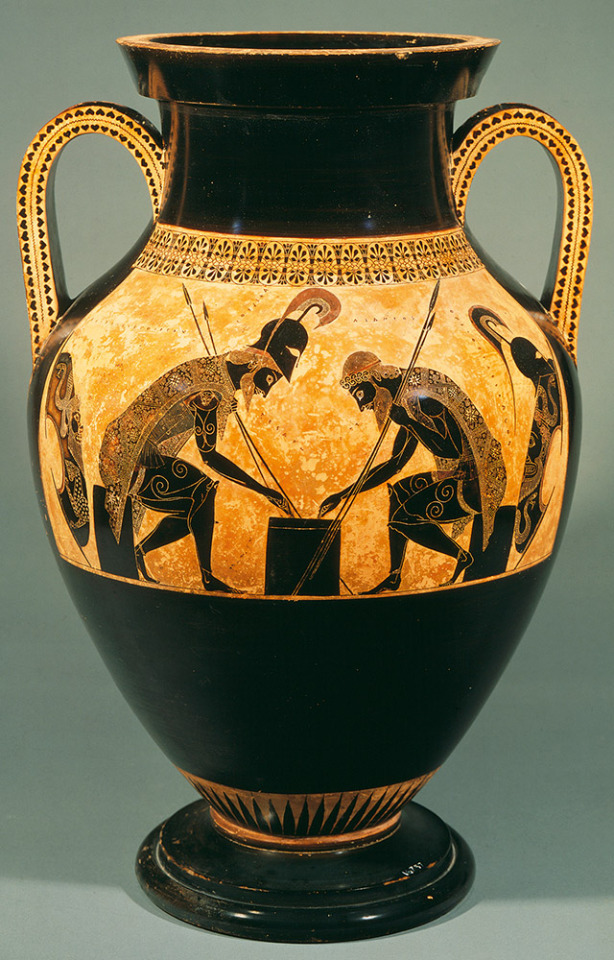
His lines are very bold and his work is very detailed and not only that he includes even thematics that are lesser known such as the preparation of the suicide instead of the act itself or this board game that ellegedly happened in the middle of a battle. Of course we also have the so-called "Siren Painter" with the amazing depiction of Odysseus resisting the sirens songs from the Odyssey
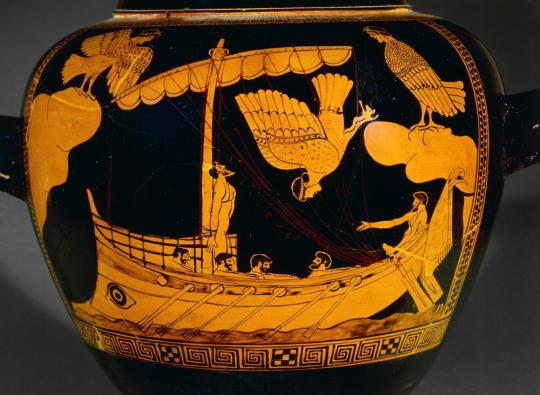
But to focus more on Iliad as you requested (or the general aspects of the war) One of my favorites is definitely this Kylix that was drawn by a painter named Douris. here's an image of Odysseus approaching mourning Achilles (his arms are hanging from a wall which is a very interesting detail)

This Kylix involves the sharing of the arms of Achilles and the medalion in the middle depicts Odysseus handing over to Neoptolemous the arms of his father while holding a boetian-style shield instead of the well known shield of the homeric poems (and it is interesting given how most Neoptolemous depictions involve him killing Priam -he seems so innocent here doesn't he?!-):
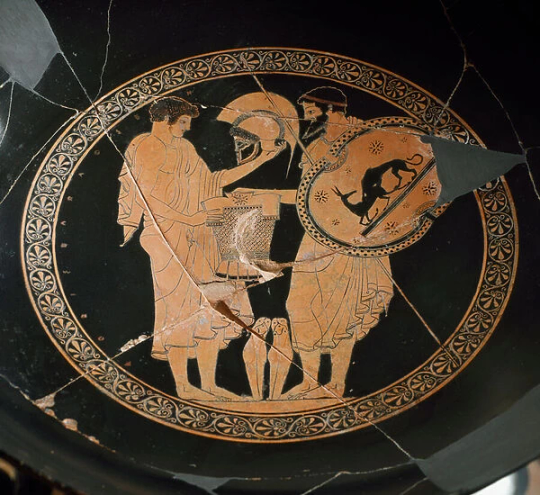
A roman wallpainting from Pompeii is definitely one of my favorite Patroclus representations along with of course the infamous scene with him being taken care of by Achilles in a Kyllix

The fight over the body of patroclus in the black-figure style is also amazingly expressive:

The Berlin Painter has definitely one of the most expressive depictions of the battle between Achilles and Hector:
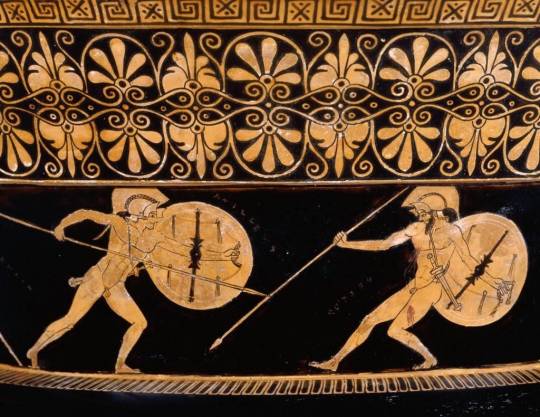
This depiction is around the neck of a crater, the figures are named and I loved how Hector is bleeding profoundly while untouched Achilles is going for the kil with his spear. Euphronius painter also has a very brutal scene of Achilles slaying Troilus:
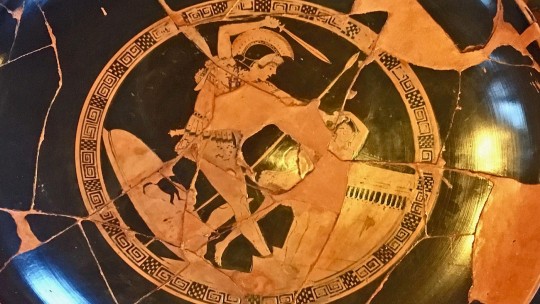
An Amphora mostly black but for one red figure seems to be depicting Antilochus and is a really rare one from one I can tell!
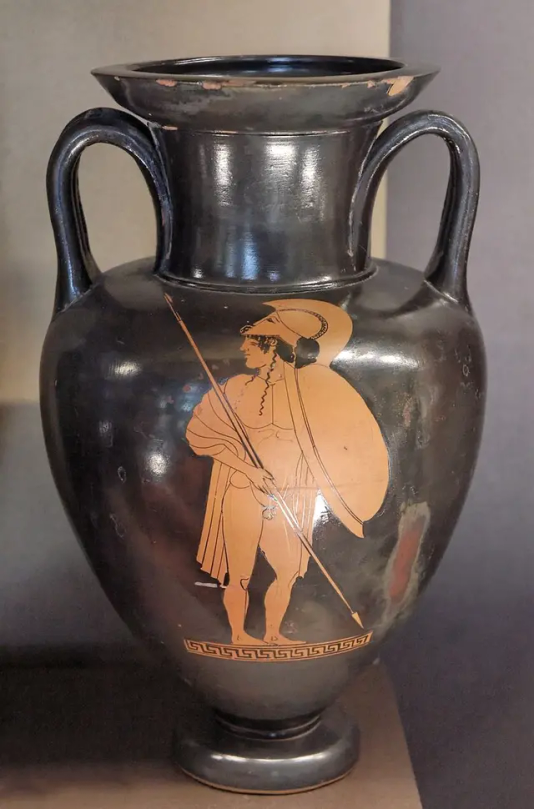
I love how his long, wavy hair is arranged under the helmet and his obviously youthful appearance (he is a great source of inspiration for my Achilles and Antilochus story). I also love the Triptolemous Painter for making this depiction of the council of Achilles:


Not only do I love the cheeky pose Odysseus has; trying to transfer his ature through painting! Not only do we again see the arms of Achilles to the walls but also we have old Phoenix to the background with his hair tonred up with white color (thankfully rescued by passage of time) with his long hair thugged with the hair band and all!
Kleophades Painter has one of the most brutal scenes of the murder of Priam I have ever seen!
This seems to follow the line of the myth that Virgil speaks of in Aenead; Neoptolemus kills Astyanax before his grandrather before killing him too. In here he seems to have laid the dead baby to his knees and almost seems like either repeatedly stabbing him or beating him to death while Priam tries to shield his head. The baby also seems to have been repeatedly stabbed as well! And blood splattered everywhere!
For Diomedes this is definitely one of my favorites; the stealing of the horses with Odysseus

One can see his youthful appearance compared to Odysseus as they drive the horses away or the exchange of the weapons with Glaukus
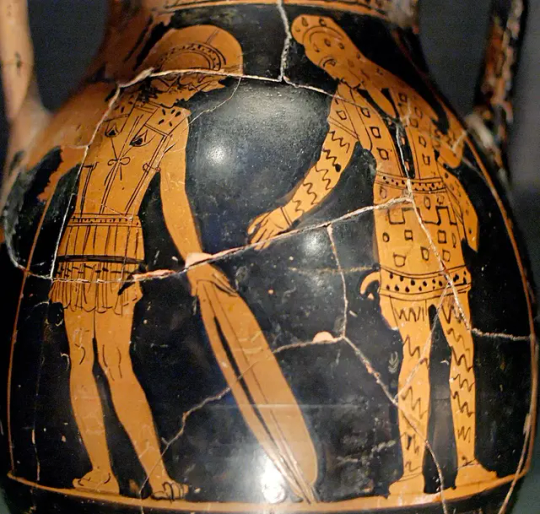
I love his youthful appearnce and the thin features and yet the stout body to show his warrior status and the way he receives the shield with care in this, shows much on his personality really.
*
Oh there are so many different depictions by ancient art alone! I would be more than happy to elaborate further with specific images on specific heroes if you want on future reblogs because honestly the category is huge! Even scenes like geometric time paintings seem to be quoting Homer and either the funeral of Patroclus or Hector:

Thank you for the intriguing question! Made me remember many of these masterpieces!
#ancient greece#ancient greek art#pottery#exekias#neoptolemous#neoptolemus#odysseus#priam#patroclus#achilles#hector#heroes of the trojan war#trojan war#iliad#the iliad#greek mythology#tagamemnon#homeric poems#greek art#ceramic art#wallpaintings#visual arts#art history#archeology#diomedes#katerinaaqu answers
129 notes
·
View notes
Text
Did you know that there is a European republic that bans entry to women and female animals, and until 2005 also banned entry to Catalan people?



This place is the Monastic Republic of Mount Athos, a theocratic autonomic republic in Greece. It's an Orthodox Christian religious centre that covers about 33,000 hectares and is inhabited by around 1,400 monks in 20 monasteries. In the 16th century, it had reached 30,000 monks in population, and right before the First World War it still had 9,000.
It was founded in the Early Middles Ages, and has been given autonomy since the times of the Byzantine Empire. Since the very beginning, in the year 1046, their laws have forbidden entry to any woman, child, and female animal with the only exception of egg-laying chicken, because they consider that women and female animals must be kept out to preserve the holiness of the site and to keep the male inhabitants away from temptation.
The reason for banning Catalans dates back to the Middle Ages, too. In 1303, the Byzantine Empire was being invaded by the Ottoman Turks. They needed help to fight against them, so the Byzantine emperor Andronikos II asked the Sicilian king for help. The Sicilian king sent him the Great Catalan Company, an army of 4,000 Catalan and Aragonese mercenaries (almogàvers) and 39 ships, led by the commander Roger de Flor. The Byzantine emperor already knew Roger de Flor, because Roger had served him when he was a Templar knight. Roger was a very respected and admired fighter with an impressive career, and he also spoke Greek. The emperor and Roger reached an agreement, Roger was nominated Megaduke and married to the emperor's niece, Mary of Bulgaria.
The Great Catalan Company was successful in their job: they fought off the Turks and gave all the land the Turks had recently taken back to the Byzantine Empire. But not everything went well: the Byzantine emperor did not pay the mercenaries what they were promised, and the mercenaries were cruel to the population. In 1305, the emperor's son Michael (co-regent of the empire) called all the mercenaries to Adrianopolis, bringing together 9,000 men of different origins. Even though last year Michael had refused to meet him, Roger de Flor went to pay homage to him again. This time, Michael welcomed him and invited him to a banquet with the leaders of the two other mercenary groups. During the banquet, following Michael's orders, the leader of the Alan mercenaries assassinated Roger de Flor and all the men who accompanied him, and dismembered Roger de Flor's body. It is said that Michael ordered exterminating all the members of the Catalan Company.
Obviously, this caused a scandal among the surviving Catalan-Aragonese troops. They answered this betrayal by declaring war against the Byzantine Empire, and sacked many parts of Greece, murdering and setting fire to many places they found on their way to Constantinoble. This terrible event became known as The Catalan Revenge. The revenge was particularly cruel against the rich monk communities, who the mercenaries brutally attacked to steal their riches and then set the monasteries on fire. The monks of Mount Athos say that the Catalan mercenaries burned 26 monks alive. The horrible revenge left a mark in the memory of Greek and Albanian people. In Albania, the word for "Catalan" became the word for "monster". Meanwhile, the theocratic government of Mount Athos banned any Catalan person from entering their territory.

Albanian book titled "Catalan", based on an Albanian folk story that depicts Catalans as monsters.
The mercenaries' cruelty only stopped when the influential Catalan doctor and intellectual Arnau de Vilanova and the Catalan king James II begged them to stop.
Mount Athos' law prohibiting Catalan people lasted for 700 years, until 2005. That year, the Government of Catalonia apologized for the events that their fellow countrymen did 700 years ago. The Catalan government paid 240,000€ for the reparation of a Mount Athos monument that had been destroyed by the mercenaries' revenge, and sent an embassy to Greece to have a reparation ceremony, which was welcomed by the Greek government, too. This way, the law was abolished.
Sources: UNESCO, National Geographic, newspapers from 2005.
#història#mount athos#greece#other countries#history#europe#catalonia#middle ages#medieval#travel#albania#byzantine empire#roger de flor#war history#anthropology#byzantine#greek history#byzantium#european history#military history
86 notes
·
View notes
Text
Letter sent by Greek general Georgios Karaiskakis to Ottoman sultan Reşid Mehmed Pasha

To Reşid Mehmed Pasha, Kütahı in Athens
Fuck your faith and your Muhammed
What do you think you’re doing cuckholds….Don’t have no shame asking us to negotiate with a kodja shit sultan.
Mehmedite?
Let me shit on him, and your vizer, and that Jew Silihtar Boda, that bitch
If I live, I will fuck them, and if I die, they will fart on my dick.
The General
Georgios Karaiskakis
20 April 1827
#what did bro do#greek posts#greek tumblr#greek quotes#greek history#ottoman#ottoman empire#history#greece#turkey#turkiye#turkish#balkan#1800s#historical#artifact#hellenic#turkic#war
64 notes
·
View notes
Text

98 notes
·
View notes
Text


Inspired by the recent excavations and new frescos at Pompeii
Our friend Papilio the Painter from ‘Amarantus and his Neighbours’ (Caroline Lawrence and CSCP) for Dr Sophie Hay
With apologies to the painters of Pompeii
PHOTO BBC/TONYJOLIFFE
#pompeii#ancient greek women#tagamemnon#greek mythology#greek myth#illustration#greek myth comix#trojan war#comic#myth comic#artistic choices#fresco#excavationss#scavi di pompei#roman history#painter#papilio the painter
173 notes
·
View notes
Text
listen, im not one to judge others on their beliefs, but i asked lord Hermes what a malicious entity would do once (as opposed to him, i was basically asking how i knew he didn’t have malicious intentions with me)
he basically said because he encourages me to think for myself. he gives me the tools of his ideology, shows me how they work, and then asks me to rebuild it from the ground up so that i fully understand what he is teaching me.
then i saw this at hobby lobby….

like dude i’m not sayin im just sayin.
my god asks me to question him. my god tells me that i should be questioning him, so i do. it gives him the chance to. answer and explain to me. so that i know, that his will is overall aligned with mine. if i don’t understand something lord Hermes does in the moment, i generally get an explanation down the line. it is to help me grow.
the only time he discourages questioning is when him and i both know it is coming out of impostor syndrome.
im just saying, i feel that the Christian god cloaks himself in a coat of divine paint, in a similar way that billionaires will donate to charity.
To look like a good person and a saint as a mask for all the evil and harm that you are doing.
the sheer amount of men and women and children that have died by the hands of men who claim to be holy… the amount of suffering that lies at the feet of christianity… i cannot stand for that. 🪽
#greek gods#greek mythology#hellenic deities#hellenic pagan#hellenic polytheism#hellenic worship#hellenism#hermes#paganism#helpol#lord hermes#christianity#christian#roman catholic#rome#catholiscism#history#classical history#crusades#war
36 notes
·
View notes
Text

Battle Scene by Lionel Royer
#lionel noël royer#lionel royer#art#battle#ancient#antiquity#classical#classical antiquity#neoclassical#neoclassicism#ancient world#europe#european#war#history#cavalry#soldiers#ancient greece#ancient greek#ancient rome#ancient roman#goddess#noblewoman#women#woman#fortress#battlefield#ships#horses
198 notes
·
View notes
Text

Ancient Greece haul BABYYYY
#the iliad#iliad#odyssey#the odyssey#ancient greece#classics#tagamemnon#greek mythology#greek history#homeric epics#trojan war
56 notes
·
View notes
Text
pink pony club but it’s the greeks hiding away in the trojan horse
51 notes
·
View notes